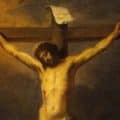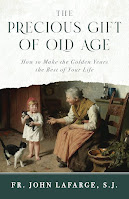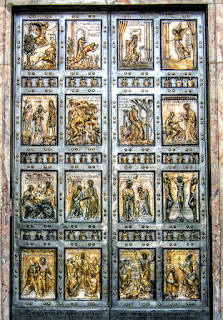Jesuit Father John LaFarge (1880-1963), son of artist John LaFarge (1835-1910), whose art graces the windows and walls of the Paulist Mother Church in New York, may be most famous for his progressive commitments, his authorship of Interracial Justice: A Study of the Catholic Doctrine of Race Relations (1937), and his founding of the Catholic Interracial Council of New York in 1934. LaFarge was also the principal author of Pope Pius XI’s planned (but eventually aborted after the Pope’s death) encyclical against racism and anti-semitism, Humani generis salutis (On the Unity of the Human Race »).
At the end of his life however, Fr. LaFarge also authored a short, meditative book, The Precious Gift of Old Age: How to Make the Golden Years the Best of Your Life (Doubleday, 1963, Sophia Institute Press, 2022). Written in 1962, La Farge’s little book obviously reflects its time and place, the early 1960s (« Camelot ») in the prosperous, post-war United States on the eve of Medicare, but it nonetheless speaks words of perennial wisdom to all who have grown old or who ever expect to (presumably everyone else).
The author’s goal was « to explore what old age has to say to us, in the light of our faith, in the light of our personal experience. » While it has much human wisdom to share with all older people, this is an unambiguously faith-filled Christian book, that looks beyond old age and forward to « closer fellowship with Him, toward whose life and peace we are ever moving. » Hence, the analogy the author makes with the canonical hour of Compline. « When this life’s work is over, you yield your spiritual component or soul to its Creator, just as each night you yield your sensitive psychic structure to the remoteness from daily reality that we call sleep. »
In human terms, the author acknowledges the multiple physical and social diminishments that inevitably accompany old age. « Your outer circle is narrowed, and internally you are in poorer shape to cope with the changing world around you. » To start with, it is important to acknowledge the naturalness of old age. Like other stages in life, it has « its own prerogatives and is best judged by its own standards, » and he stresses how « so any human abnormalities come from trying to act outside of one’s own age. »
Even in natural terms, attitude is central to how one interprets old age. « Aging in a world of hope is a totally different affair from growing old in a world, in a community, or in a network of family relationships poisoned by the bitter and unnatural atmosphere of despair. »
The centrality of human and social relationships is especially important in old age with its potential for increased isolation and loneliness. If that was an issue in 1962, how much more of an issue is it now, in our problematic present, when – as is well known and increasingly written about – people of all ages are experiencing increasing isolation and loneliness! Hence the value of LaFarge’s emphasis on love of neighbor. « Advanced years give an extra opportunity to make the love of neighbor your own in new and unexpected ways, and one way is the relief of loneliness for other aged persons. » For those not yet old who might venture to read this book, he gives advice about « the importance in one’s younger years of forming wide interests, so as not to be caught short when life around you seems to fade. »
The author also acknowledges the pros and cons of intergenerational living, which again is even less common today than it was in 1962. (In that year, there were five of us living in our apartment – ranging in age from my sister at seven to my grandmother at 81.) Of course, in religious life, intergenerational living remains the norm. So his observations may have a special salience for those of us in that special state of life.
LaFarge recalls a December 1962 TV documentary, The Superfluous Ones, which highlighted « the various types of people for whom the metropolis spells, loneliness, aimlessness, or neglect. » Nowadays, of course, the situation is so much worse – for many more people across the age spectrum. In fact, thanks to the Great Society (i.e., Medicare and Medicaid), while there are still seniors who are poor and underserved, in general seniors are among the better off in our society. Even then, however, the author saw in the modern world’s « impersonal and ruthless, destructive[ness] of human values and neighborliness, » an opportunity for older persons to help and serve others.
The author acknowledges that prosperity is not universal, that worldwide « the proportion of aged men and women who are tormented by the most elementary types of want – the lack of even the bare essentials of nourishment, clothing, medicine, and so on – is usually very much greater than your imagination can conceive. » Even in the United States, while « only a society of abundance could produce such a high proportion of old people, » not all « these human products of abundance » benefit fully from its fruits.
Finally, in words which seem so prescient today, he stresses in relation to how we live leisure and retirement, « our responsibility for the goods of the earth in general, whether they be our own personal gifts or the material and spiritual goods that surround us. » And certainly every senior who has struggled with the latest technological innovation can resonate with the contrast between « a simpler, less highly organized world » which we once knew and « the highly rationalized intricacies of our modern existence » in which « so many inventions bring added burdens in their train. »
The Precious Gift of Old Age invites us, whatever our age, to embrace « the courage to accept our natural life, whatever be its length or circumstances, and the courage to accept the divine life, the life of the resurrection, which is love. »





